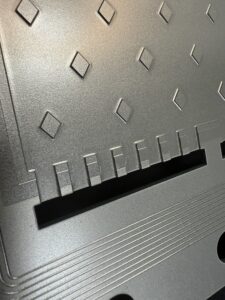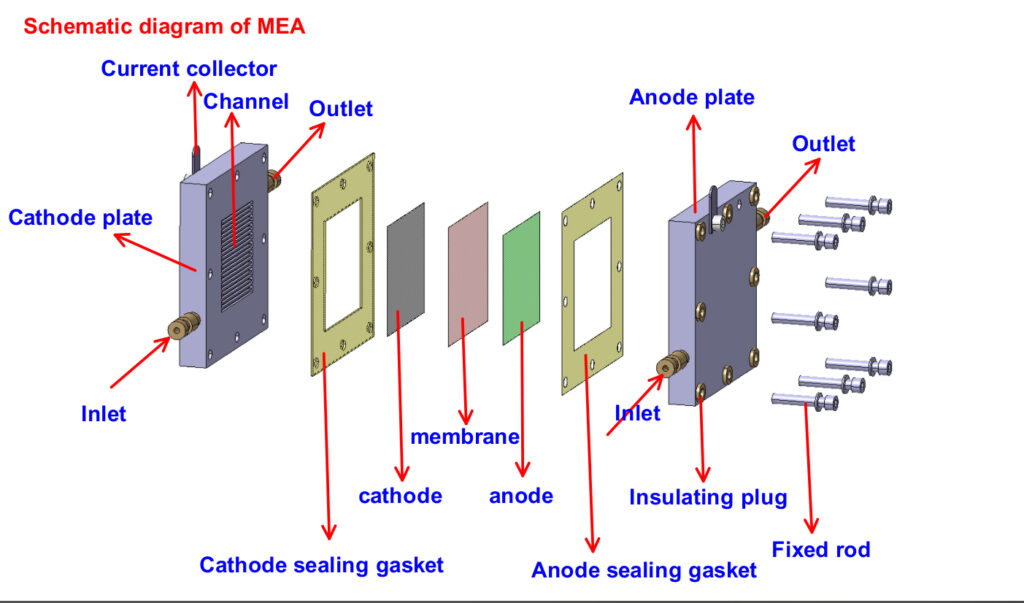The membrane electrode assembly (MEA) serves as the central point for achieving miraculous conversions in fuel cell technology. The MEA stands as the essential core of a cell which makes chemical processes conduct electricity. The motor function of fuel cells depends on a properly operating MEA since individual materials are worthless without it.
What Is a Membrane Electrode Assembly (MEA)?
A fuel cell features MEMs as internal layers which facilitate electrochemical processes while they operate. A PEM along with anode and cathode catalyst layers and GDL remains crucial components for MEM operation. The MEA works as a high-performance sandwich system where each section plays an essential part.
Why Membrane Electrode Assemblies (MEAs) Are the Heart of Fuel Cells
An MEA acts as the main controller of performance quality and durability, as well as the production costs of fuel cells. The reactions between hydrogen and oxygen occur within this structure which produces electricity and emits water as its single by-product. The clean fuel power originates from a small yet effective structural composition.

Membrane electrodes consist of essential parts that form the basis of their design.
The Catalyst Layer
All significant processes take place in the catalyst layer. Platinum and additional catalysts embedded inside the piece function to break hydrogen into protons and electrons on the anode, yet they facilitate oxygen molecules to join protons and electrons on the cathode.
The Proton Exchange Membrane
The PEM serves as a central component because it both transmits protons between electrodes and stops gases and electrons from passing through. As a selective barrier, it prevents short-circuiting inside the fuel cell.
The Gas Diffusion Layer
The assorted pore structure of this layer creates uniform gas dispersal throughout the catalyst region while operating as a control mechanism for heat and water flow.
Understanding the Catalyst Layer
Anode Catalyst Layer Function
The catalyst located at the anode side receives hydrogen gas before it splits into protons and electrons. The device receives its energy supply through an external circuit where electrons travel to power various devices.
Cathode Catalyst Layer Function
The cathode side converts oxygen molecules and membrane-proton transport and circuit-electron flow into forming water.
Materials Used in Catalyst Layers
The standard catalyst material today remains platinum, but scientists actively search for alternative transition metal and nanoalloy solutions that are cheaper and more abundant.
The Role of the membrane electrode assembly (MEA) in Fuel Cells
Proton Exchange Membrane
Proton Transfer Mechanism
The PEM functions as a main transporter to move protons between the anode and cathode points. An effective proton transfer requires the membrane to preserve high protonic conductivity.

Gas Separation and Insulation
The membrane should prevent the gases (hydrogen and oxygen) from intermixing while blocking electronic leakage. The system remains both efficient and secure due to this mechanism.
Gas Diffusion Layer (GDL) performs the vital, unsung operational duties in affecting system performance.
Mechanical Support
Structural integrity in the membrane electrode assembly (MEA) depends on the GDL while maintaining physical linkage between membranes and flow field plates.
Facilitating Gas Flow
The catalyst layers achieve uniform reactions because the component evenly distributes hydrogen and oxygen molecules throughout.
Managing Water and Heat
Natural water removal, together with thermal regulation capabilities, allows the GDL to stop membrane damage from water-related issues.
How These Components Work Together
The catalytic operation depends on compatible performance between the catalyst layer and membrane layer and the diffusion layer. The anode catalyst leads hydrogen to transfer protons which move through the membrane as electrons operate your device. The production of water through oxygen takes place at the cathode end of the process. Such power becomes both efficient and basic in its operation.
MEA Fabrication Techniques
Manufacturing an MEA requires different procedures, which include:
- Hot pressing the layers together
- Coating of the catalyst through spraying on the membrane surfaces
- Decal transfer methods for higher precision
Every manufacturing process works differently on the performance characteristics and long-term durability of the MEA.
Challenges in MEA Manufacturing
- High material costs (especially platinum)
- Uneven catalyst dispersion
- Durability under stress (heat, humidity)
- Water and thermal management issues
The successful execution of these fiber cell challenges will unlock widespread practical applications of such technology.
Advances in MEA Materials
Researchers are developing:
- Low-platinum and non-platinum catalysts
- Durable, flexible proton exchange membranes
The use of nanostructured gas diffusion layers improves oxygen transport into the active fuel cell area.
The innovations focus on achieving price reduction and enhanced performance levels.
Impact of MEAs on Fuel Cell Efficiency and Life
The MEA affects the conversion efficiency of hydrogen power generation as well as the operational lifespan of the fuel cell. When an MEA proves insufficient, it leads to fuel loss before the system stops operating. The performance of an ideal MEA provides dependable clean energy that sustains for extensive periods.

Applications of MEAs in Different Fuel Cell Types
You’ll find MEAs in:
- PEM fuel cells for vehicles and portable devices
- The use of solid oxide fuel cells requires different membranes to function.
- Direct methanol fuel cells (DMFCs) for small electronics
- MEA production follows individual application prerequisites to achieve specific needs.
Cost Considerations and Scalability
Mass adoption of fuel cells faces its biggest obstacle from the expensive nature of the MEA and its platinum catalyst component. The adoption of fuel cells will accelerate because of less expensive manufacturing techniques which will specifically drive power generation alongside transportation systems.
Future Trends and Innovations in MEA Technology
We’re looking at:
- Catalyst recycling to cut costs
- AI-driven design optimization
- Graphene-based diffusion layers
- 3D printing for custom MEAs
This technology continues to evolve because it presents extensive possibilities for use.
Conclusion
Small in size, though it is the membrane electrode assembly that performs substantial work in fuel cells . Within this area, fuel converts into usable power through mechanisms determined by the design, which establishes the cell specifications for both performance attributes and maintenance requirements and monetary expenses. Studies indicate that future technological progress will develop strong, effective, and environmentally friendly membrane electrode assemblies that will bring us nearer to sustainable clean energy systems.

